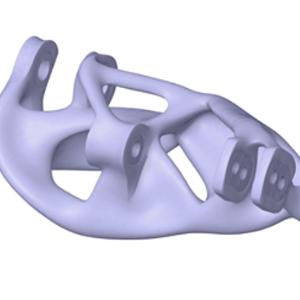| Time: | October 13, 2023, 10:00 a.m. (CEST) |
|---|---|
| Pfaffenwaldring 7, Hörsaal V 7.04 | |
| Venue: | Pfaffenwaldring 7, Lecture hall V 7.04 |
| Download as iCal: |
|
Additive Manufacturing (AM) – also known as 3D printing – is taking off in many industrial processes. In particular, powder bed fusion for metal manufacturing has definitively changed the way of prototyping metal parts but also plastic 3D printing is changing modern engineering in many aspects.
However, AM is a complex physical process, involving different thermo-mechanical phenomena at very different scales; accordingly, simulation is fundamental to predict temperature and stress distributions during and after the printing process. Furthermore, AM allows for new unknown freedom in terms of complex shapes which can be manufactured, opening the door to a new set of design requirements.
After a short introduction to the technology and possible applications, the presentation will focus on immersed method to describe the complex physics as well as on solve topology optimization schemes to solve problems associated to the freedom which is possible now thanks to AM. The presentation will close with an excursus on our experience on the use of AM to support industrial developments and the design of innovative AM technologies under developments in our labs.
About the presenter:
Ferdinando Auricchio is professor of Solids and Structural Mechanics at the University of Pavia, Italy, research associate at IMATI-CNR (Institute for Applied Mathematics and Informatic Technologies "E. Magenes") in Pavia, affiliated member of the IRCCS Policlinico San Matteo in Pavia.
He received the Euler Medal by ECCOMAS (European Community of Computational Methods in Applied Sciences) in 2016 and the Fellow Award by IACM (International Association for Computational Mechanics) since 2012. Since 2018 he is a member of the Italian National Academy of Science, known also as Accademia dei XL. Since 2021 he is President of ECCOMAS.
Major research interests are: development of numerical schemes; development of simulation tools to support medical decision (in particular, for cardiovascular applications), and more recently everything that is related to additive manufacturing.


